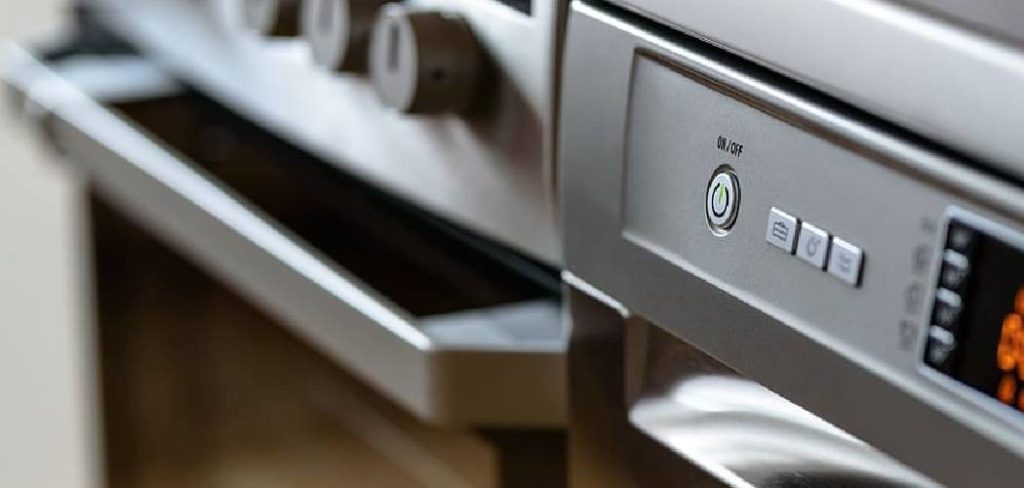The Kitchenaid dishwasher is a great appliance to have in your kitchen. It helps save time and energy by efficiently cleaning dishes with minimum effort. However, some people may struggle with the initial setup and operation of the dishwasher. This guide will provide step-by-step instructions on how to use Kitchenaid dishwasher effectively.

10 Steps Instruction on How to Use Kitchenaid Dishwasher
Your KitchenAid dishwasher is a trusty member of your kitchen arsenal. It’s the unsung hero, quietly tackling the messes of your daily culinary adventures. With a KitchenAid dishwasher, robust engineering meets sleek design, promising efficiency and style. But are you making the most of your appliance? Let’s dive into 10 steps to fine-tune your dishwasher routine, ensuring spotless results every time.
Step 1: Load Like a Master Chef
Proper loading is the gateway to spotless dishes. It’s not just about fitting in everything; it’s about balance. Load plates on the bottom, bowl-side down, and utensils on the sides. Glasses and mugs fit best on the top rack, while keeping them away from the spray arm’s rotation. Leave ample space between items to allow water to flow freely. Consult your manual for rack adjustments to accommodate all types of dishware.
Step 2: Rinse Smartly, Not Extensively
Modern dishwashers are designed to handle heavy-duty stains without pre-rinsing. In fact, a small amount of food can actually help detergent work more effectively. A quick scrape is often enough. Running a half-empty dishwasher is not economical—wait until it’s fully loaded. When you do wash, use a cycle that matches the soil level of your dishes to save on water and energy.

Step 3: Choose the Champion of Clean
Selecting the right detergent is not a trivial choice—it’s a hallmark of dishwashing prowess. Conventional dish soap is a formidable foe in this arena; its siding nature is a recipe for disaster in the precision environment of a KitchenAid dishwasher. It can wage a foamy rebellion that undermines the appliance’s performance, leading to a kitchen calamity. Instead, opt for specially formulated dishwasher detergents that pack a punch without the suds.
High-quality tablets or pods, known for their dissolving dynamism, unite with powerful rinse aids to eradicate grease and grime with an efficiency worthy of applause. In this battle against blemishes, arm yourself with a detergent that guarantees a sparkling victory every cycle.
Step 4: Optimize Your Water Softener
Hard water is an unwelcome guest in the world of pristine dishware. Its tendency to leave behind mineral deposits can cloud your glasses and dull your cutlery, casting a shadow over the luster of your table settings. Yet, with a simple, proactive step, you can defend against this common culinary adversary. Keep the heart of your KitchenAid dishwasher working at peak performance by ensuring your water softener is regularly topped up with the right type of salt.
This isn’t just an act of maintenance; it’s a statement of commitment to excellence and an assurance that every piece that emerges from your dishwasher sparkles as if brand new. Remember, the clarity of your glassware reflects the dedication behind your cleanliness regimen.
Step 5: Secure Your Load
Securing your dishwasher load before starting a cycle is not just about preserving your precious dishware; it’s about protecting the integrity of your machine. A single loose item can interfere with the spray arms and stack, leading to a subpar wash and potential damage. Make sure everything is snug and stable, taking a moment to double-check that your items won’t shift. Our clients have reported drastically better results—and lifespan extension of their appliances—by adhering to this simple, yet often overlooked step.
Each piece has its place, and when secured properly, you are set for a wash cycle that delivers immaculate results, wash after wash. Trust in these practices to not only keep your dishes gleaming but also prolong the impressive performance of your investment.

Step 6: Respect the Spin
The detergent chamber is positioned to release its contents at a specific time—usually after the initial rinse, so don’t obstruct the spin. A stopped-up or slow turn can mean poor distribution of detergent, so load your dishwasher in such a way that doesn’t interfere with the soap’s big moment. Allow the well-designed mechanics of your machine to circulate solutions optimally, by mindfully arranging your dishes.
It’s the attention to these details that defines a truly seamless kitchen operation. Our clientele can attest to the incredible difference this practice makes, likening it to a well-choreographed ballet within their dishwashers. Their endorsements are not merely comments, but resounding validations of a system perfected over countless cycles. Thus, respect the spin, and in turn, it will respect the cleanliness and clarity of every item you wash.
Step 7: Check and Clean the Filters Regularly
Your dishwasher’s performance is a testament to the health of its filters. Unchecked, these essential components can become a haven for unwelcome guests—mold and bacteria. A routine monthly inspection is more than a mere suggestion; it is your secret weapon against odor and the degradation of wash quality. Be proactive. Make it your mission to not only locate but cleanse the filters thoroughly.
Gently remove any trapped particles and rinse them away, restoring the full potential of your machine’s inner workings. Clients who’ve embraced this practice share astonishing accounts of how a simple cleaning habit significantly boosted their appliance’s lifespan and maintained a spotless dish after dish. It’s not just maintenance, it’s a dedication to excellence.
Step 8: Use the Right Wash Cycle
Your dishwasher isn’t a one-trick pony—it likely has a range of cycles, from express to heavy duty. Tailor your choice to the load for the best results, controlling the temperature, water pressure, and time to achieve that perfect wash. For heavily soiled items, a heavy cycle may be necessary, but for lightly soiled loads, a quick or eco cycle may suffice.

Step 9: Understand Your Dishwasher’s Feedback
Modern dishwashers are more communicative than ever, sending clear signals through lights or display screens about what they need to keep performing at their peak. If yours indicates it’s time for salt or rinse aid, don’t delay—these are not mere suggestions but essential elements that ensure flawless function and sparkling results. And let’s not forget maintenance alerts; they’re your machine’s way of saying, “Help me help you.”
Heed these calls; staying proactive about your appliance’s health isn’t just sensible—it’s paramount to its longevity and your satisfaction. I’ve personally seen the difference between dishwashers cared for with an understanding ear and those left to whisper into the void. The contrast is striking, not only in performance but in the preservation of your investment. Remember, a dishwasher that is listened to is a dishwasher that keeps its promise of impeccable cleanliness, cycle after cycle.
Step 10: Maintain the Exterior
Don’t neglect the outside of your dishwasher. Wipe down stainless steel or other finishes regularly with a damp cloth to keep it looking sharp. For tougher grime, use a mild detergent or a product recommended for your particular model. A good-looking dishwasher is a sign of a well-cared-for dishwasher.
Incorporating these 10 steps into your kitchen routine will elevate your dishwashing experience to a whole new level. Not only will you preserve the lifespan of your KitchenAid dishwasher, you’ll also consistently enjoy those remarkable results that make the humble dishwasher a kitchen powerhouse. Cheers to cleaner dishes and a happy dishwasher!
You Can Check it to Reset Kitchenaid Refrigerator
Frequently Asked Questions
How do I start a KitchenAid dishwasher?
To start your KitchenAid dishwasher, first make sure that the door is properly closed and latched. Then, select your desired cycle and options using the control panel. Finally, press the “Start” button to begin the wash cycle. Refer to your dishwasher’s manual for specific instructions on how to operate it.
Can I use regular dish soap in my dishwasher?
No, regular dish soap should not be used in a dishwasher. It creates too many suds and can overflow, causing damage to your machine. Dishwasher detergents are specially formulated for use in the high-temperature wash cycles of dishwashers and are designed to create minimal suds.

How often should I clean my dishwasher?
It is recommended to clean your dishwasher at least once a month. This includes wiping down the interior and exterior, cleaning any filters or removable parts, and running an empty wash cycle with a specialized dishwasher cleaner. Regular maintenance will keep your dishwasher functioning properly and extend its lifespan.
Conclusion
In this conclusion, discuss how to use Kitchenaid dishwasher in the right manner and the benefits of using them.
By following these 10 steps, you can elevate your dishwashing experience with your KitchenAid dishwasher. Not only will you maintain the lifespan of your machine, but you’ll also consistently enjoy sparkling clean dishes that make the humble dishwasher a true kitchen powerhouse.
When starting your KitchenAid dishwasher, always ensure that the door is properly closed and latched before selecting your desired cycle and options. Remember to only use dishwasher detergents specifically designed for high-temperature wash cycles to avoid damaging your machine with excessive suds. And don’t forget to regularly clean your dishwasher, both inside and out, to keep it running smoothly.
